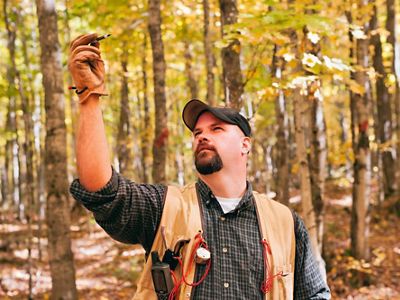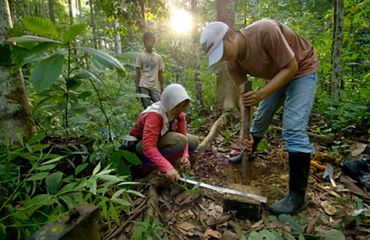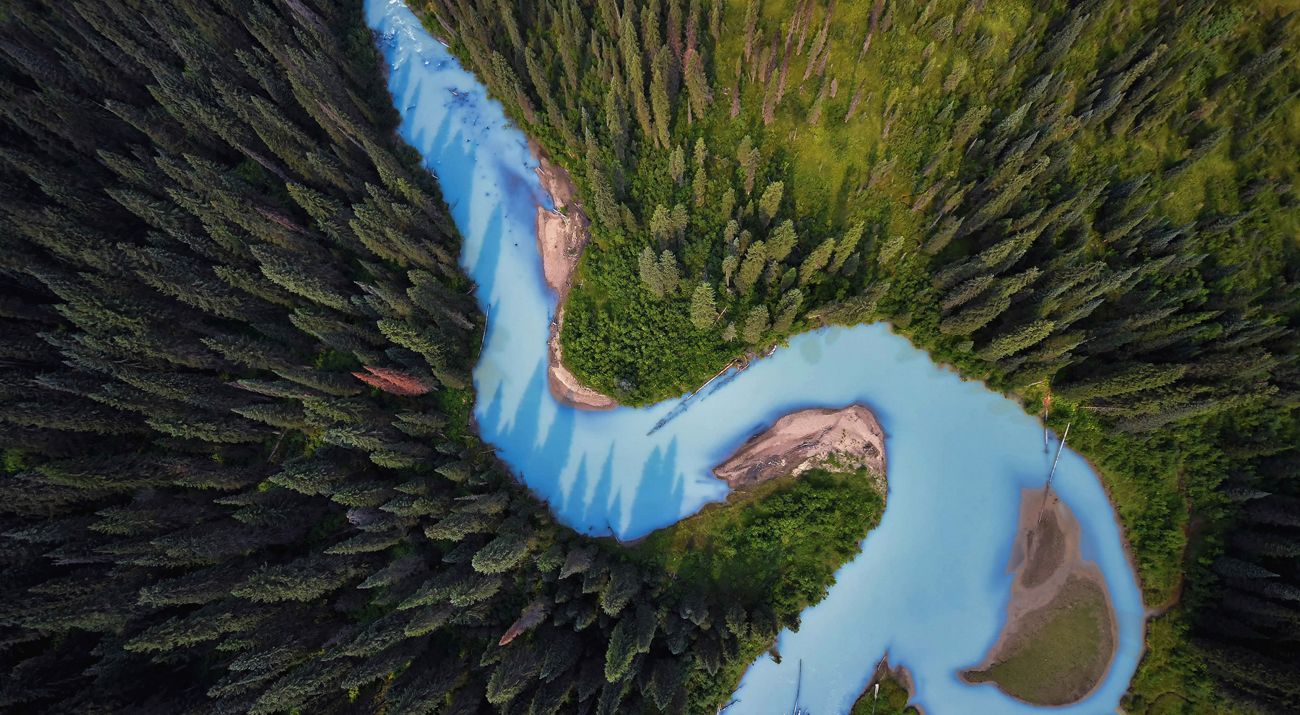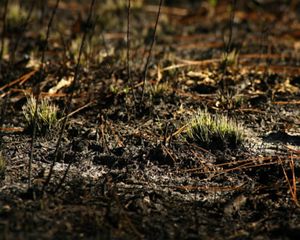The Nature of Innovation
We must reduce emissions dramatically this decade to keep global temperatures in safe bounds—and both technology and nature can play a role, says TNC's Director of Global Climate Science.
The climate emergency requires a dramatic transformation of society to reduce emissions from energy, transportation, manufacturing, construction and land use, ultimately bringing them to net-zero by 2050. But industrial emission reductions alone, while critically important, will not be enough to limit global temperature increases to well under 2°C above pre-industrial levels—the goal laid out in the Paris Agreement and that is required to avoid catastrophic global changes.
That ambitious goal will require global commitments to both an energy transition and greater investment in protecting, restoring and improving management of forests, farms and wetlands, which naturally remove carbon from the atmosphere.
To help understand the role nature can play in fighting climate change, we asked Peter Ellis, TNC’s Director of Global Climate Science, to answer a few questions.
Recently, there has been a lot of conversation in the news about the use of new technological innovations to capture carbon emissions and slow the planet’s warming. What do such innovations actually mean for addressing climate change?
Peter Ellis: Solving the climate change problem is totally feasible, but it’s not going to be easy, and it’s going to take equal parts innovation and collective action. This recent focus on technological innovation is great, but it’s important to recognize that innovation occurs in the non-human world as well. Long before humans existed, the planet came up with an incredibly innovative solution to the same problem we face now: too much greenhouse gas in the atmosphere. That solution, “invented” by evolution over 3 billion years ago, is called photosynthesis. Since then, nature has honed photosynthesis to perfection, and has used it to regulate the amount of carbon dioxide in the atmosphere.
Also, it just so happens that this natural climate solution is pretty good at providing other good stuff like clean water, clean air, biodiversity, healthy soil, and improved human well-being, not to mention a generally more interesting planet to live on.
So, in short, we absolutely need technical climate solutions, but we also need natural ones. Both have a role to play, and we need both to face the climate emergency. Most people recognize this, but unfortunately, some people have descended into an unproductive either/or discussion.
TNC has been a leader in scientific research on natural climate solutions; what else have you learned about the nature’s role in providing a livable future on our planet?
Peter Ellis: In 2017, we answered an important question: How much can nature contribute to fighting climate change? The answer was simple: 11 gigatons of avoided emissions per year, or about one third of what we need to do in the next ten years to avoid a planetary catastrophe caused by unchecked warming.
But we’re still learning about how we can best deploy specific strategies. There’s been a lot of attention on tree planting recently—which is great!—but tree planting is only one of many available natural climate solutions. We need all of them, and we need to use the right ones at the right time in the right place. In other words, TNC scientists are now trying to answer the more difficult question: not just how much nature can contribute, but how we actively work with nature to get to the 11 gigatons we need.


Can you give some examples of this?
Peter Ellis: Well, our original 2017 study emphasized the need for forest protection and improved management of existing forests, which collectively hold the potential to deliver one third of the 11 gigatons of emission reductions nature can provide in total. We are now working on understanding the enabling conditions—such as strengthened community tenure and low-carbon timber incentive programs—that help protect forests from conversion and improve their management.
Similarly, new research from our team shows that simply leaving forests to regrow on their own can contributes an additional quarter of the 11 gigatons. (Other natural climate solutions—from regenerative agriculture to mangrove conservation—account for the remaining approximately 40 percent of nature’s potential.)
In some places where human disturbance has prevented trees from replanting themselves (for example, abandoned agricultural lands far from seed sources) tree planting may be appropriate, but most of the time trees have evolved lots of innovative ways to plant and regrow themselves. After all, nature’s R&D program has a 350-million-year head start on us!

How is TNC working to influence decisions about the implementation of natural climate solutions so we can tackle this problem collectively?
Peter Ellis: Great question. I’m proud to say I have lots of really smart colleagues who are helping to figure out the best way to bring the science forward to the right decision-makers and land stewards. For example, my colleagues in Indonesia and Gabon are taking our science and working directly with policymakers in government to help them answer key questions: which NCS make sense for their country, how do they go about implementing them, and where? The answers are being integrated directly into Indonesia and Gabon’s climate mitigation plans.
Quote: Peter Ellis

It would be impossible — and frankly arrogant — to think that we humans could do it alone without nature.
As another example, my colleagues in corporate engagement are working with big companies like Microsoft and Amazon to help them learn how to use natural climate solutions to reduce and offset emissions in their own supply chains. TNC also founded Nature4Climate, a coalition of leading conservation, multilateral and business organizations that is working to catalyze partnerships between governments, civil society, businesses and investors.
We need more of this kind of work: bringing natural and technological innovations forward to help investors, practitioners and decision-makers identify the what, where, when, and how of working with nature—together—to face civilization's greatest challenge. The point is that it would be impossible—and frankly arrogant—to think that we humans could do it alone without nature. We need to approach the problem with the right level of humility and respect for nature’s incredible power and enlist all of its amazing innovations in the challenge ahead of us.
Our Goals for 2030
Our planet faces the interconnected crises of rapid climate change and biodiversity loss.
the time for action is nowGlobal Insights
Check out our latest thinking and real-world solutions to some of the most complex challenges facing people and the planet today.




